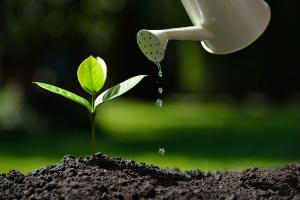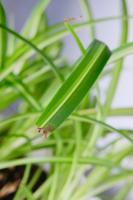When to Cover Tomato Plants
Tomatoes are known for their delicious taste, but they are also vulnerable to a variety of pests and weather conditions like frost or extreme heat. To prevent damage to your plants, it is important to know when to cover your tomato plants. Here are some guidelines:
When to cover tomato plants from frost
Frost is one of the most significant threats to tomato plants, especially in the early spring or late fall. When temperatures dip below 32°F, tomato plants can suffer from frost damage. To protect your plants, it is best to cover them with a blanket or cloth cover. You should cover your plants on nights when a frost is expected or when temperatures are predicted to dip below freezing. It is also a good idea to remove the cover in the morning once temperatures rise above freezing.
When to cover tomato plants from sunburn
Tomato plants can also be damaged by extreme heat and sunburn. When temperatures reach 90°F or above, tomatoes can become stressed and wilt. If plants are not protected, they may suffer from sunburn, which can lead to scarring and a decrease in fruit production. To prevent sunburn, you should cover your plants with shade cloth or use umbrellas to create shade. Cover your plants during the hottest part of the day, usually between noon and 4 pm. Make sure to remove the cover once temperatures begin to cool in the evening.
When to cover tomato plants from pests
Tomato plants are highly susceptible to pests like aphids, whiteflies, and spider mites. These pests can cause damage to leaves and fruits, which can lead to a decrease in crop yield. To prevent infestations, it is best to cover your plants with a floating row cover. Make sure to secure the edges of the cover to prevent pests from crawling underneath. You should cover your plants immediately after planting and remove the cover once the fruit begins to set. It is also a good idea to periodically check your plants for pests and use organic insecticides if needed.
When to cover tomato plants during transplanting
When you transplant your tomato plants from indoors to outdoors, they are at risk of transplant shock. During this period, plants can be stressed due to changes in temperature, humidity, and light. To prevent transplant shock, you should cover your plants with a cloche or individual plant covers. This will help to create a greenhouse-like environment, which can help acclimate your plants to their new surroundings. You should cover your plants during the day and remove the cover at night to prevent overheating.
Conclusion
Properly timing coverings for your tomato plants can help prevent damage from frost, sunburn, pests, and transplant shock. Make sure to monitor temperatures and weather conditions to determine when to cover your plants. With a little bit of care and attention, your tomato plants can thrive and produce a bountiful harvest.

 how many times do yo...
how many times do yo... how many planted tre...
how many planted tre... how many pine trees ...
how many pine trees ... how many pecan trees...
how many pecan trees... how many plants comp...
how many plants comp... how many plants can ...
how many plants can ... how many plants and ...
how many plants and ... how many pepper plan...
how many pepper plan...































